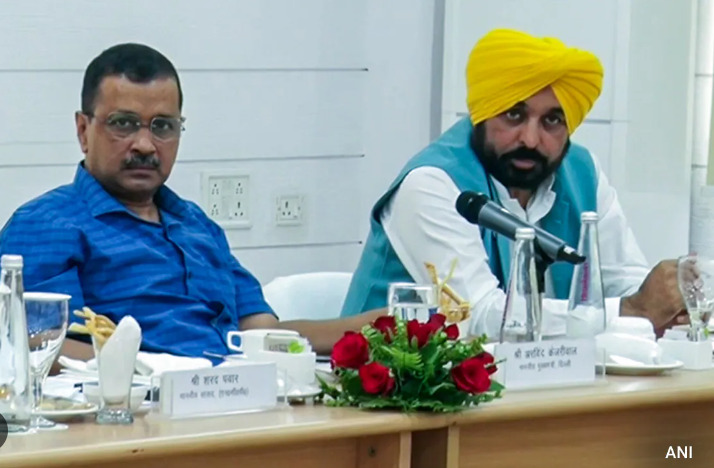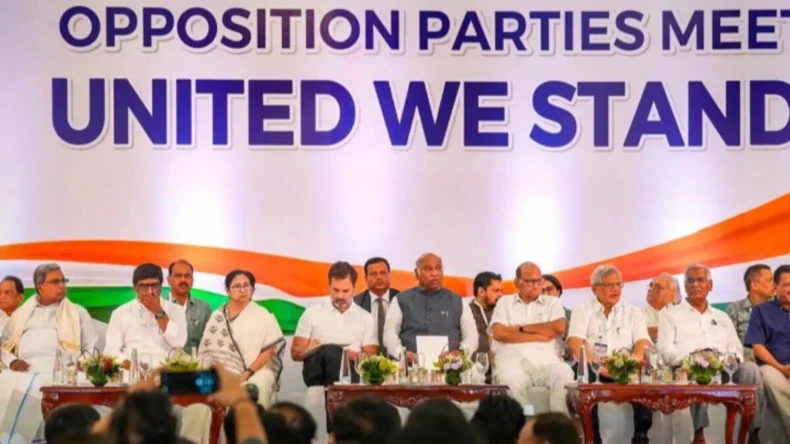The Indian National Developmental Inclusive Alliance (I.N.D.I.A) alliance is gearing up for its third significant meeting in Mumbai, where leaders from 28 opposition parties are set to convene over two days to deliberate on their plans for the upcoming 2024 Lok Sabha polls. The alliance, formally established during the last meeting in Bengaluru, is poised to take further shape, possibly announcing a coordination committee, a logo, and key panels dedicated to drafting a common minimum program and discussing seat-sharing strategies.
I.N.D.I.A Seeking a Fulcrum Amidst Uncertainties
As the discussions unfold, a pivotal question emerges: Who can emerge as the fulcrum of the I.N.D.I.A alliance? The opposition has been discreetly avoiding contentious topics like designating a convenor or nominating a potential prime ministerial candidate, which could escalate tensions among the diverse coalition. Instead, they are focusing on more attainable goals such as establishing a sub-group for communication strategies, formulating campaign panels, designing a unique logo, and initiating dialogues on seat-sharing arrangements. The absence of a clear central figure underscores the alliance’s emphasis on unity while attempting to accommodate diverse viewpoints and interests.
The unease over the prospect of a singular prime ministerial face is evident from the various statements and U-turns exhibited by several parties within the alliance. This apprehension stems from a delicate balancing act, where parties are keen on projecting a united front while preserving their individual identities and political aspirations.
BJP’s Critique and Alliance Dynamics
The BJP hasn’t remained silent in response to the opposition’s maneuvers. BJP National Spokesperson Sambit Patra launched a verbal attack on the I.N.D.I.A alliance, labeling their Mumbai meeting as a “Ghamandia meeting,” or an arrogant gathering. Patra accused the opposition parties of being embroiled in scams worth colossal amounts and likened their discussions to a “musical chair” exercise.
Critics argue that the alliance seems to be driven more by compulsion than actual strength, asserting that its primary purpose is to challenge the BJP’s hold on power rather than presenting a coherent alternative vision. However, leaders from within the alliance have defended their collaboration as a collective effort to rescue the nation’s democratic values, constitution, and federal structure from the BJP-RSS combined.
The Path forward

As I.N.D.I.A’s mega Mumbai meet unfolds, it is clear that the alliance is navigating through complexities to forge a coherent identity while accommodating the aspirations of its diverse members. The absence of a definite prime ministerial candidate showcases the alliance’s intent to prioritize the collective objective of defeating the BJP. However, this cautious approach also gives rise to a level of uncertainty and speculation, as different parties seek to maintain their distinct political space within the alliance.
The inclusion of regional players adds a layer of complexity to the INDIA alliance. The possibility of the Shiromani Akali Dal (SAD) from Punjab joining the alliance has created a buzz. However, this prospect is met with caution, especially due to the presence of Arvind Kejriwal’s Aam Aadmi Party (AAP) in the alliance, which holds a significant stake in Punjab politics. Sharad Pawar, a prominent leader in the alliance, hinted that the inclusion of SAD might not be straightforward given the differing policies of the alliance partners.
Meanwhile, regional dynamics also came to the forefront when Delhi Chief Minister Arvind Kejriwal expressed discontent over not being featured in a poster of the alliance leaders. The poster, initially excluding Kejriwal, was later revised to accommodate him, highlighting the delicate balance that the alliance must maintain to keep all members content.
The absence of a clear central figure underscores the alliance’s emphasis on unity while attempting to accommodate diverse viewpoints and interests.
The discussions over the next two days will likely shape the future trajectory of the I.N.D.I.A alliance, possibly influencing its approach to the 2024 Lok Sabha elections. Amidst the dynamics of coalition politics, the alliance strives to strike a delicate balance between projecting unity and safeguarding the interests of its individual constituents. As the meetings continue, the nation watches with anticipation, eager to discern the contours of this evolving political landscape.












